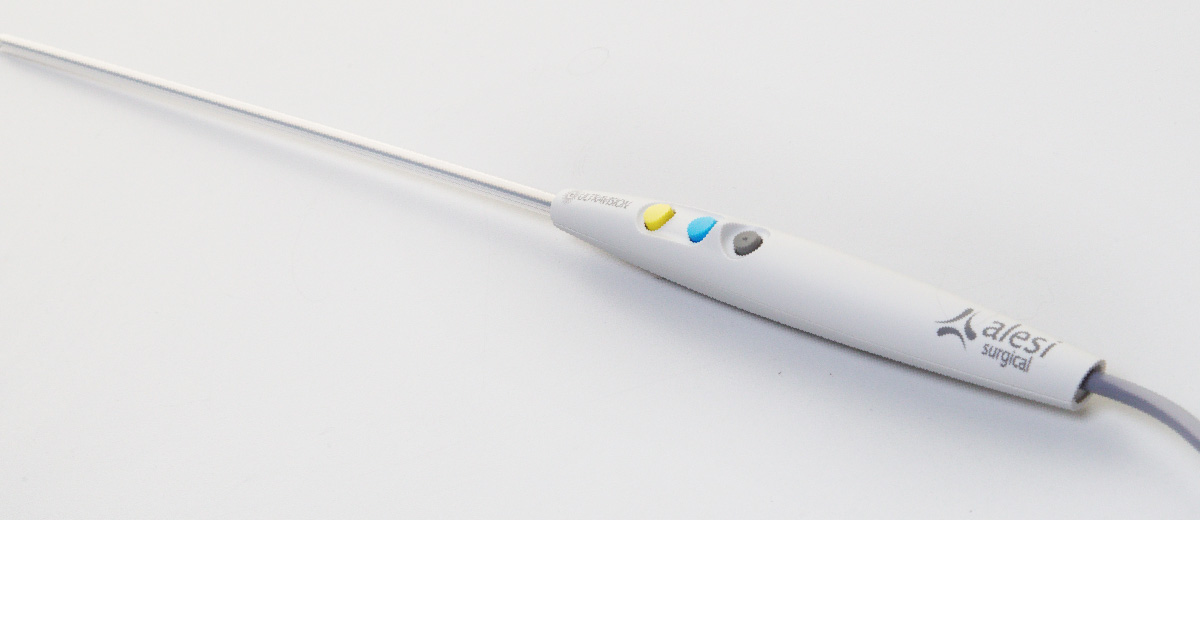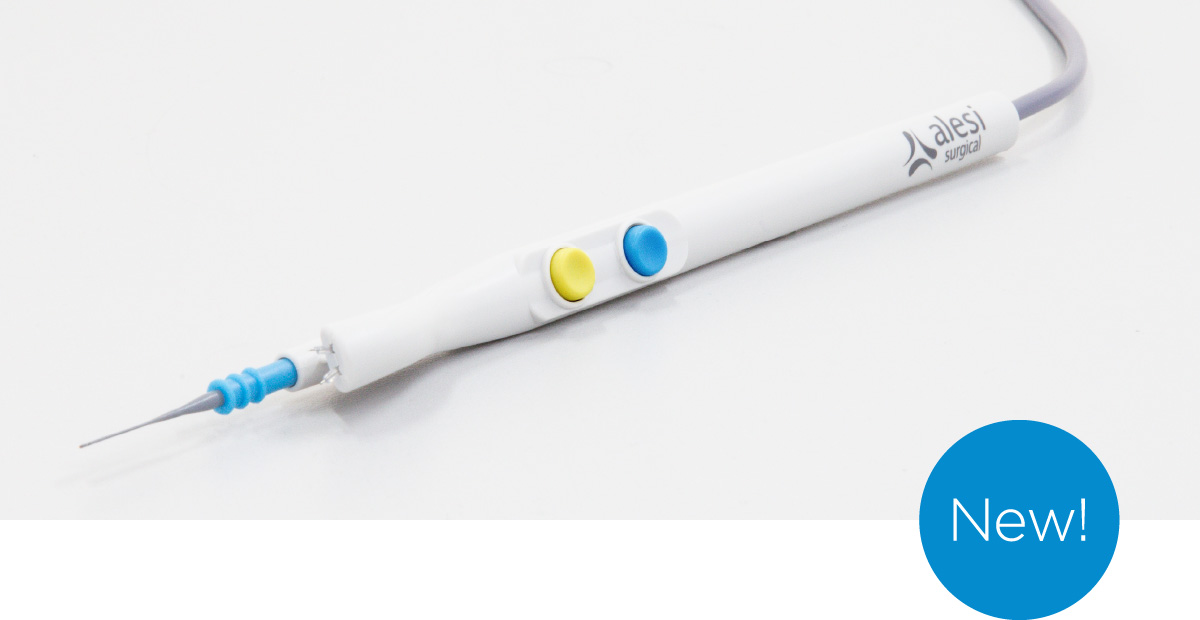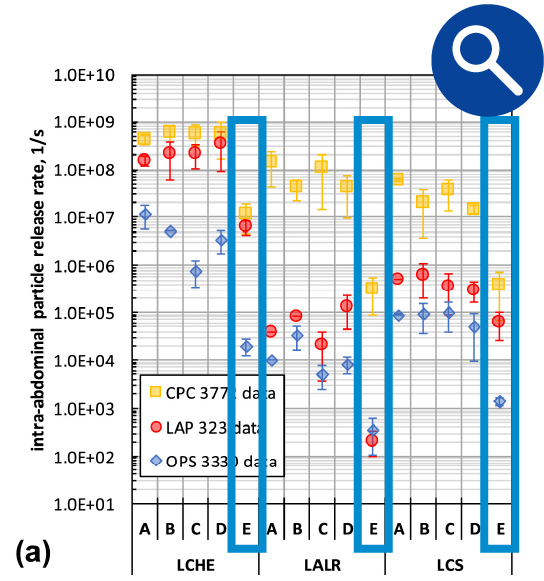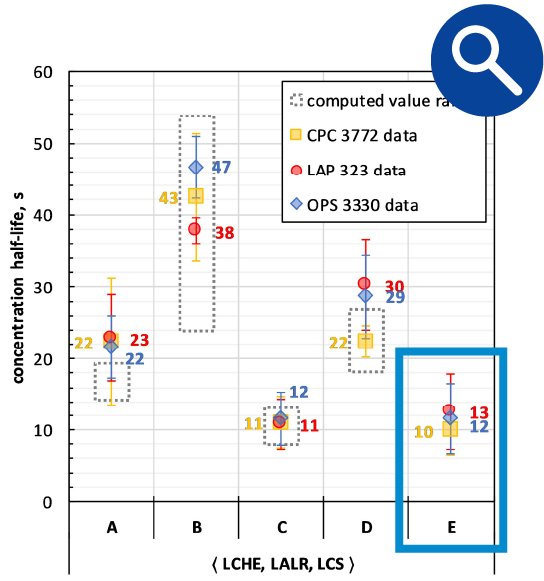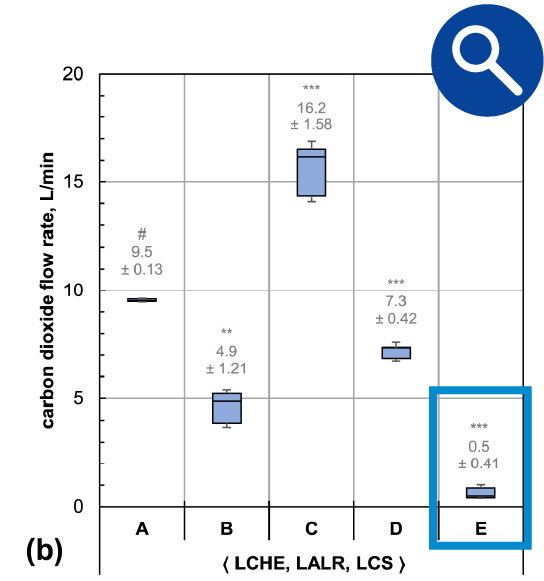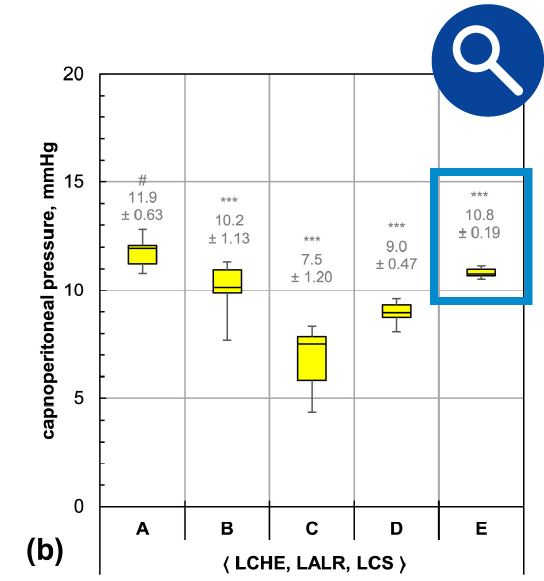Performance data
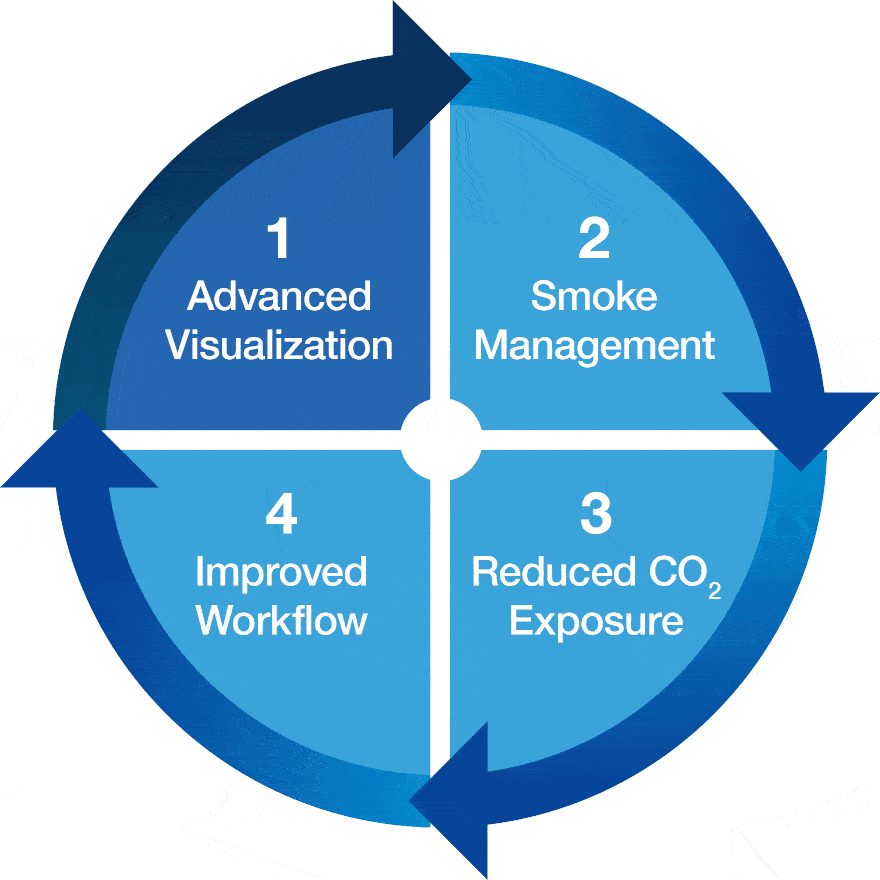
Ultravision™ has undergone
rigorous independent testing,
achieving outstanding results.
The below data highlights the game-changing results achieved by Ultravision when measuring visualization, surgical smoke management, CO2 management, and the procedural efficiencies achieved.
Best-in-class in laparoscopic surgery
A. Venting; B. Passive Filter; C. Smoke evacuator; D. Airseal; E. Ultravision.
LCHE = lap chole (monopolar); LALR = liver resection (ultrasonic), LCS = colon dissection (ultrasonic)
Study
In vivo study of 5 smoke management approaches (Gohler et al 2023) comparing Ultravision (E) to venting smoke into the OR (A), a passive filter (B), smoke evacuator (C), and advanced insufflator (D) in three surgical procedures.
Read StudyResult
Ultravision was able to demonstrate best-in-class performance compared to the four other alternative smoke management approaches:
- Smoke management: between 100-1000x less smoke detected in situ, with the remainder being rapidly removed from the atmosphere.
- Lowest CO2 flow rate and consumption: from 10-32x lower flow rate than competing approaches.
- Most stable pneumoperitoneum: pressure variation of only 1.7% during surgery, compared to between 5.3%-17%.
Visualization
Ultravision consistently delivers advanced visualization,
optimising procedural performance
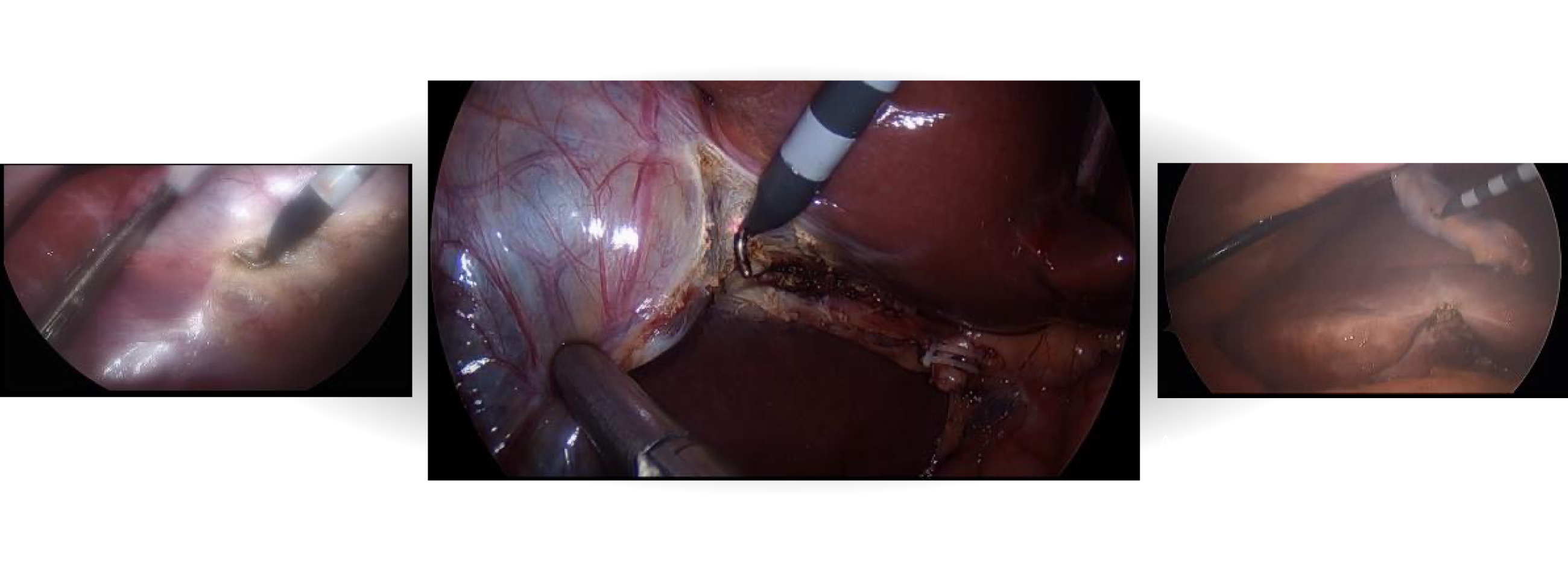
Visual field comparison
performed by Dr. Jin S. Yoo at
the Duke Regional Hospital, US
1) Rapidly suppresses surgical smoke which provides continuously clear visualization
2) Ultravision does not rely on diluting the smoke filled abdomen with new CO2
3) Stable pneumoperitoneum due to no gas exchange facilitates low pressure, low flow surgery
Advanced visualization study
Evaluate Ultravision's performance during laparoscopic cholecystectomy
Ansell et al (2014)
Test concluded that Ultravision improves
visibility during laparoscopic surgery and
significantly reduces procedural delays
for smoke clearing and camera cleaning.
The surgeon’s view
When we’re doing laparoscopic surgery visualization is just about everything.
We need to be able see very clearly what we are doing and anatomically what we are trying to accomplish.
Dr. Richard Rosenfield, MD
Executive Medical Director
Pearl Women’s Center, US
Smoke management
Ultravision proves to be more efficient in controlling bioaerosols than traditional smoke evacuation systems
Capture and Inactivation of Viral Particles from Bioaerosols by Electrostatic Precipitation. (Preston et al 2023)
Read Study“We demonstrate that both enveloped and non-enveloped viral particles were efficiently captured and inactivated by Electrostatic Precipitation…”
“This study highlights EP as an effective means for capturing and inactivating viral particles in bioaerosols, which may enable continued surgical procedures during future pandemics.”
Ultravision versus Continuous Smoke Evacuation Systems
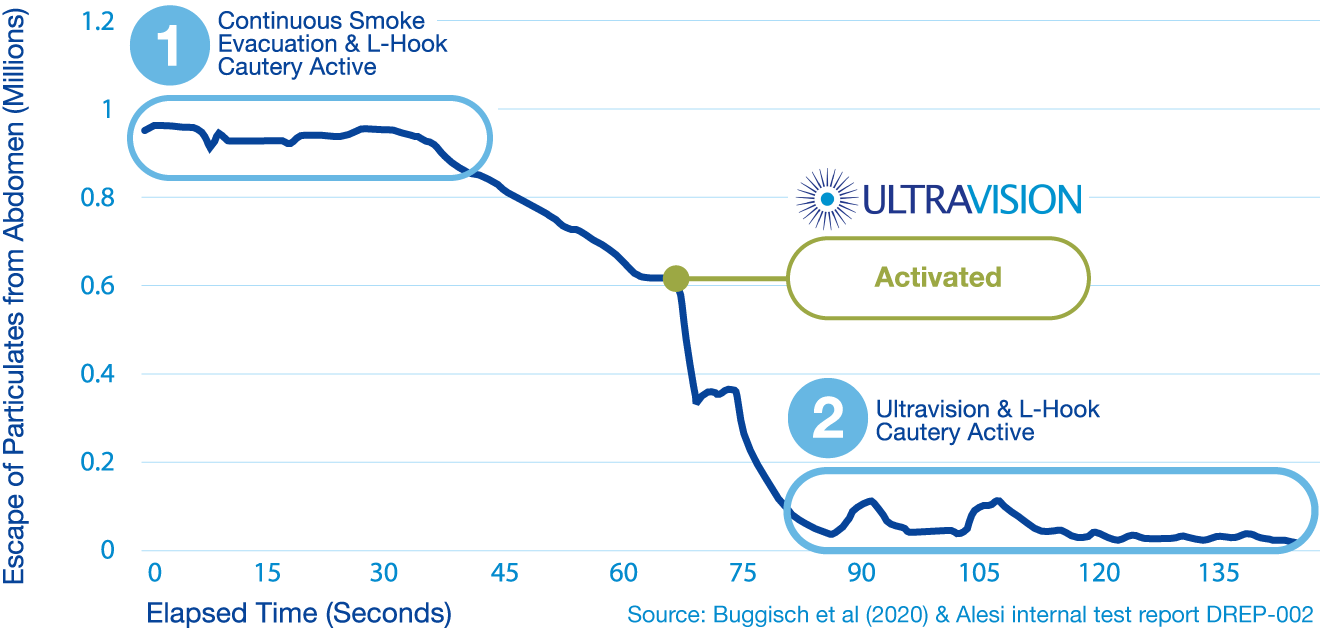
1) Continuous Smoke Evacuation experiences additional escape of smoke particulates through leaks in trocars and instruments exchanges.
2) Ultravision suppresses smoke and bioaerosols at the point of creation which reduces the likelihood of release in the operating room.
Bioaerosol escape from the abdomen into the Operating Room is significantly reduced with Ultravision.
A remarkable 23x reduction in bioaerosols is achieved.
Measuring speed & effectiveness. Ultravision v filter-based smoke evacuation system
Ultravision minimizes surgical smoke, providing two levels of risk reduction;
Two levels of risk reduction
1. Particle suppression at the point of creation
2. More rapid elimination of smoke compared to smoke evacuators
After 60 seconds Ultravision removes 99.9% of particles from the atmosphere, versus 30.2% with a smoke evacuator.
Removal efficiency test for sub-viral particulates
1. Suppresses 99% of particulates down to 0.007um (7nm, sub-viral sized) from aerosolisation. Ability to contain sub-viral sized particles.
2. The only product independently verified to be effective at sub-viral particle sizes.
CO2 management
Ultravision’s unique system facilitates low pressure, low flow surgery and reduces CO2 usage
A test to explore the use of Ultravision in facilitating low pressure surgery in total laparoscopic hysterectomy (TLH) and myomectomy.
Ultravision enhances low pressure laparoscopic hysterectomy and myomectomy. This was achieved by minimizing interruptions to surgery and exchange of CO2; providing a clear visual field throughout the procedure; and eliminating surgical smoke at the site of origin.
Dr. Jin S. Yoo demonstrates the benefits of Ultravision
when performing Bariatric surgery Roux-en-Y.
A clear field of view is maintained
alongside a stable pneumoperitoneum.
Dr Yera and Mr Misra share their experience of
using Ultravision in laparoscopic surgery.
CO2 pressure is maintained due to low exchange of CO2.
Low volume CO2 used, resulting in a high level of surgeon satisfaction in being able to operate at the lowest safe pressure whilst using minimal CO2, in line with clinical guidelines.
Improving OR efficiency
Ultravision enables a more efficient OR through time savings and reduced CO2 usage.
Oxford University Hospitals measured the procedural efficiencies achieved across four laparoscopic specialties.
The financial impact was calculated based upon any efficiency gain.
*Source: Efficiency and Innovation presentation given at the HCSA conference, 2017.
Efficiency improvements in all specialties:
- Gynae - 20 minutes per procedure
- Upper GI - 14 minutes per procedure
- Colorectal - 10 minutes per procedure
- Urology - 9 minutes per procedure
- Potential to add 1 additional procedure per list
plus reduced risk of overrun
An additional £1.7m revenue per year was estimated, based upon the ability to schedule additional procedures.
Evaluate Ultravision performance during laparoscopic cholecystectomy
- 8 minutes per case saved
- Zero pauses in 77% of procedures
- No camera cleaning required in 95% of cases
Open surgery data
IonPencil smoke management performance
A bench test comparing the smoke management performance of the IonPencil with a representative smoke pencil. Smoke was measured at the surgeon's breathing zone when performing a simulated laparotomy.
The smoke pencil performance was determined by the setting of the smoke evacuator to which it was attached. The performance of the IonPencil, which requires no vacuum, was found to be equivalent to the smoke evacuator pencil at maximum power.
Source – Alesi internal report MCR-007-003
A bench test assessing and measuring volatile organic chemicals (VOCs) released into the atmosphere when using the IonPencil during simulated surgery.
Source – Alesi internal report DVER-007-012
Only five of 64 VOCs assessed using the EPA TO-15 test method were found to be above background levels when using the IonPencil. These five were quantified and the amounts present ensure a large margin of safety for both short-term (STEL) and eight-hour daily average (TWA) operating room personnel exposure limits.
Questions and Answers
All of the data showing the performance of Ultravision is based upon bench studies, simulated surgery, or from clinical use. Its smoke management performance relates to measurements of remaining smoke in the atmosphere. This is unlike smoke evacuators, which typically just cite the efficiency of filtering the smoke in the evacuator, not the efficiency of capturing the smoke from the atmosphere.
This obviously depends on the length of the procedure, but surgeons have estimated on average 5-10 minutes per case during laparoscopic surgery. This is because of no longer having to manage the smoke and the consequences of its buildup during a procedure, including pausing, venting smoke, and cleaning the laparoscope.
This depends on many factors such as the procedure, whether a surgeon chooses to lower the carbon dioxide flow from the insufflator, the quality of the trocars, and the extent of use of hollow laparoscopic instruments. Typically, we would expect CO2 consumption to be reduced by one-third to half of the amount normally consumed.
*1 ‘Advanced visualization Study’ Ansell 2014 (Ansell et al, Electrostatic precipitation is a novel way of maintaining visual field clarity during laparoscopic surgery: a prospective double-blind randomised controlled pilot study Surgical Endoscopy (2014) 28: 2057-2065).
*2 ‘Smoke Management Performance Data’ Buggisch 2020 ( Buggisch et al, Experimental Model to Test Electrostatic Precipitation Technology in the COVID-19 Era: A Pilot Study Journal of American College of Surgeons, (2020), 231 (6) 704-712).
*3 ‘UV vs. filter-based smoke evac’ DREP report 2012 (Based on internal validation - DREP 002 (2012) A Study Of The Ability Of The Ultravision Electrostatic Precipitator To Clear The Particulate Matter Produced By Energy-Based Surgical Instruments).
*4 ‘CO2 Management Performance’ Levine 2020 (Levine, D et al, “Electrostatic Precipitation in Low Pressure Laparoscopic Hysterectomy and Myomectomy” (2020), JSLS, Volume 24, Issue 4).

